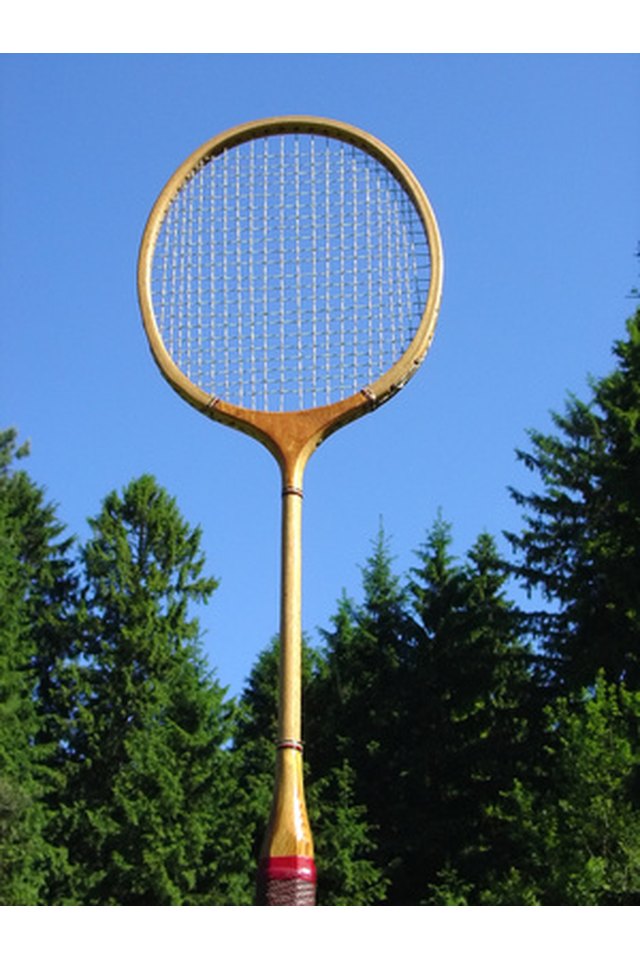Materials Used to Make a Badminton Racket

Badminton takes its name from Badminton House, a royal manor in the English county of Gloucestershire where it is widely considered the formal birthplace of the racket sport. Although evidence of badminton dates as far back as the ancient Greeks some 2000 years ago, it is now an Olympic sport and played all over the world. Historically, badminton rackets were made from wood, but due to their cumbersome nature and heavy weight, the materials and the shape changed drastically.
Aluminum and Graphite
The badminton racket frame is normally made from lightweight, man-made metals such as graphite or aluminum. This is because most players believe that the lighter the racket, the more manageable and maneuverable it is. Lightweight rackets are also thought to move more quickly through the air and with more freedom, helping trace and hit fast-moving shuttlecocks. Other players, however, prefer a heavier racket because it provides more power and reduces shock. These rackets of differing weights are not made from different materials; the heavier racket is simply made with more graphite fiber. The standard weight of a badminton racket should be between 2.8oz (80g) and 3.5oz (100g).
Nylon
Nylon is used to make the strings of a badminton racket. The synthetic material is cheap to produce but strong and long lasting. Nylon string sizes are designated by gauge number. The lower the gauge value, the thicker the string. Thicker nylon strings give control and durability but sacrifice power. Thinner synthetic strings provide power to a player's shots but are prone to wear, tear and breaking.
Natural Animal Gut
Interestingly, some badminton players still prefer animal gut strings because they give rackets more feel, control and power. They also absorb shock and reduce vibration on the user’s playing arm. Natural animal gut is costly, however, and doesn’t last as long as other synthetic strings.
Cotton and Elastic
Badminton towel grips are made from cotton and elastic. They can be bought to slip over the more common rubber racket grips and are used by professional players due to their perspiration-absorbing qualities. The cotton compounds in the grip absorb excess body moisture ensuring that a strong hand grip remains constant and gives the user more control and confidence in his stroke. Because grips are made from cotton compounds, the material can be dyed in various colors, allowing players to customize their rackets.
References
Writer Bio
Matthew Caines began writing and editing in 2008 and has since gained valuable experience in the publishing industry working for national publications such as "The Guardian," "Sartorial Male," "AREA Magazine," "Food & Drink Magazine," "Redbrick Newspaper" and "REACH Magazine." He has a Bachelor of Arts in history from the University of Birmingham, U.K.
